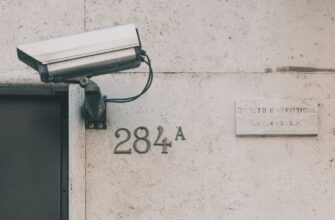In today’s digital age, protecting your business data is non-negotiable. A store ledger with password protection has evolved from a luxury to an essential tool for retailers in 2025. This comprehensive guide explores why password-secured ledgers are critical for modern businesses, key features to prioritize, setup steps, and expert maintenance practices to safeguard your financial records against cyber threats and human error.
## What is a Password-Protected Store Ledger?
A password-protected store ledger is a digital or physical record-keeping system that requires authentication to access sales, inventory, and financial data. Unlike traditional ledgers, it encrypts sensitive information behind secure login protocols, ensuring only authorized personnel can view or modify records. Modern versions integrate cloud backups, multi-factor authentication (MFA), and audit trails – transforming basic bookkeeping into a fortified data vault.
## Why Password Protection is Essential for 2025 Ledgers
1. **Cyber Threat Surge**: With ransomware attacks increasing by 200% since 2022, unprotected ledgers are prime targets for data theft.
2. **Regulatory Compliance**: Laws like GDPR and CCPA impose heavy fines for data breaches involving customer financial information.
3. **Internal Security**: 43% of data leaks stem from employee errors; passwords prevent accidental exposure.
4. **Audit Integrity**: Password logs create accountability trails for financial reviews and tax filings.
5. **Remote Work Risks**: Hybrid teams need centralized, secure access to prevent unauthorized entry.
## Top 5 Features in a 2025 Password-Protected Ledger
– **Military-Grade Encryption**: AES-256 bit encryption for unbreakable data security
– **Role-Based Access Control**: Assign tiered permissions (e.g., view-only for staff, edit for managers)
– **Automated Backup & Recovery**: Daily cloud sync with point-in-time restoration
– **Biometric Integration**: Fingerprint or facial recognition alongside passwords
– **Tamper-Proof Audit Logs**: Timestamped records of all user activities and changes
## How to Set Up Your Ledger: Step-by-Step
1. **Choose Your Platform**: Select cloud-based software (e.g., QuickBooks Secure) or hardware solutions like encrypted USB ledgers.
2. **Enable Password Protocols**: Set minimum 12-character passwords with symbols, numbers, and uppercase letters.
3. **Configure User Permissions**: Restrict access levels based on job roles using admin controls.
4. **Activate Multi-Factor Authentication**: Link to mobile authenticator apps or biometric devices.
5. **Schedule Backups**: Automate daily encrypted backups to two separate locations (e.g., cloud + external drive).
6. **Test Security**: Simulate breach scenarios to identify vulnerabilities.
## Best Practices for Ongoing Security Maintenance
– **Rotate Passwords Quarterly**: Mandate password changes every 90 days
– **Monitor Access Logs**: Review login attempts weekly for unusual activity
– **Update Software Monthly**: Patch vulnerabilities through manufacturer updates
– **Conduct Employee Training**: Teach phishing recognition and password hygiene
– **Disable Ex-Employee Access Immediately**: Revoke credentials upon staff departure
## Frequently Asked Questions (FAQ)
**Q: Can password-ledgers integrate with POS systems?**
A: Yes, most 2025 models sync seamlessly with major point-of-sale systems through API connections, auto-importing sales data without manual entry.
**Q: What if I forget the master password?**
A: Reputable systems offer emergency recovery options like security questions or secondary admin approval – avoid solutions without backup access protocols.
**Q: Are physical password ledgers still relevant?**
A: For high-risk environments (e.g., jewelry stores), encrypted hardware ledgers with keypad access provide air-gapped security against online threats.
**Q: How much does a secure ledger system cost?**
A: Cloud-based solutions start at $15/month; enterprise hardware ranges from $200-$1,000. Consider free trials before committing.
**Q: Can passwords prevent all data breaches?**
A: While crucial, passwords alone aren’t foolproof. Combine them with MFA, VPNs for remote access, and employee cybersecurity training for layered protection.
Implementing a password-protected store ledger in 2025 isn’t just about compliance – it’s strategic risk management. By selecting feature-rich systems, enforcing strict access controls, and maintaining vigilant security habits, retailers can transform their ledgers from vulnerability points into impenetrable business assets. Start fortifying your records today to future-proof your financial integrity.








